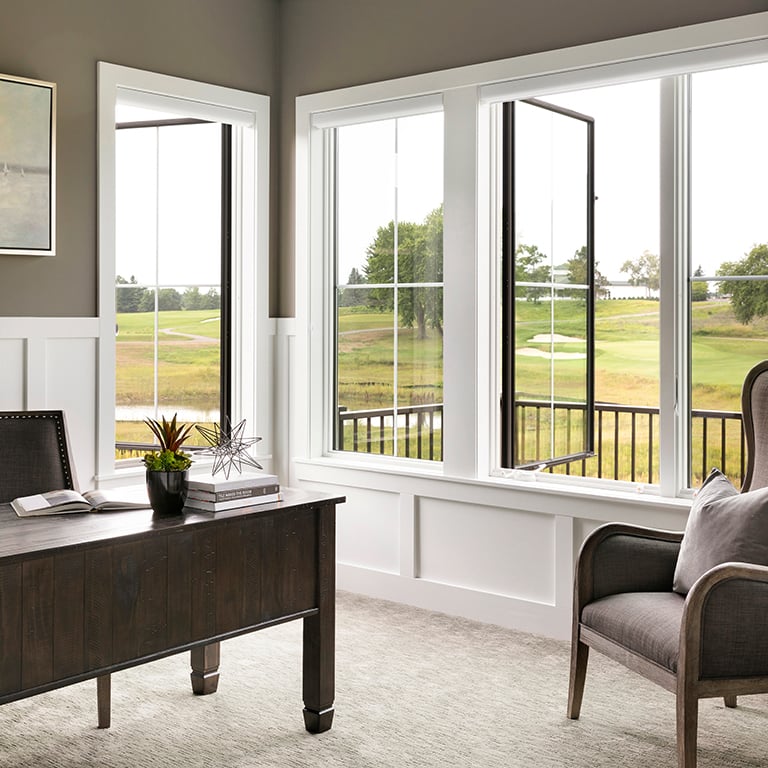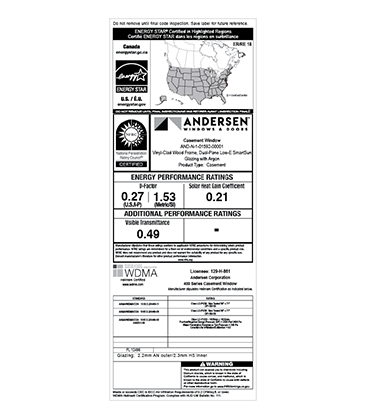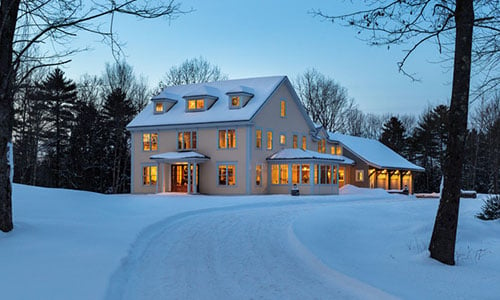
Energy Efficient Windows: A How-To and Buyer’s Guide
Why energy efficient windows?
What are energy-efficient windows?
There are two main components to consider with an energy efficient window:
Frame Materials
The material used to build a window frame is critical for maximizing energy efficiency – wood, vinyl, composite (Fibrex® material) and fiberglass are some of the most common types. Savings and costs vary based on the material and its construction process.
Glass
Double-pane (dual-pane) glass naturally performs better than single-pane glass for energy efficiency, as the space between each pane acts as an additional layer of insulation from the heat or cold. Low-E glass is optimal for conserving energy because it reduces ultraviolet (UV) and infrared light penetration to limit heat transfer.
How do I know if a window is energy efficient?
Start by looking for the ENERGY STAR® logo or National Fenestration Rating Council (NFRC) logo on the window or door you want to buy or install. Window installers and companies will also typically promote products that are NFRC labeled and ENERGY STAR certified so you know up front if they sell and install energy-efficient windows.
How To Read The Label
Look for the certification label below on every window and patio door you buy. These ratings allow you to measure and compare the energy performance of similar products. If a product does not have this label, the NFRC has not verified its claims.
Each product’s NFRC label is customized to the exact window or door specifications (size, glass type, etc.), then applied to the finished product. View NFRC ratings for Andersen® products.

How do energy efficient windows work?
U-Factor |
Solar Heat Gain Coefficient (SHGC) |
Visible Transmittance (VT) |
|
|---|---|---|---|
What It Measures |
U-FactorHow well a product prevents heat from escaping
|
Solar Heat Gain Coefficient (SHGC)The product's ability to block heat caused by sunlight
|
Visible Transmittance (VT)The amount of light allowed through the window
|
Performance Impact |
U-FactorLower ratings mean better insulation
|
Solar Heat Gain Coefficient (SHGC)Lower ratings mean less heat transfer
|
Visible Transmittance (VT)Higher ratings mean more light
|
Measurement Ranges |
U-FactorScale of 0-1
|
Solar Heat Gain Coefficient (SHGC)Scale of 0 – 1
|
Visible Transmittance (VT)Scale of 0 – 1
|

How much money do energy efficient windows save?
According to energystar.gov, ENERGY STAR certified windows can save an average of 12% on energy bills each year1. If windows are single-pane, an estimated savings for ENERGY STAR certified windows is between $101-583 per year. If windows are double-pane, savings estimates range between $27–$197 per year2.
Actual savings will vary based on local climate conditions, window type (single-/double-pane, frame material), utility rates and individual home characteristics.
1Residential Windows, Doors and Skylights. Date accessed September 29, 2020.
2Benefits of ENERGY STAR Qualified Windows, Doors, and Skylights. Date accessed September 29, 2020.

